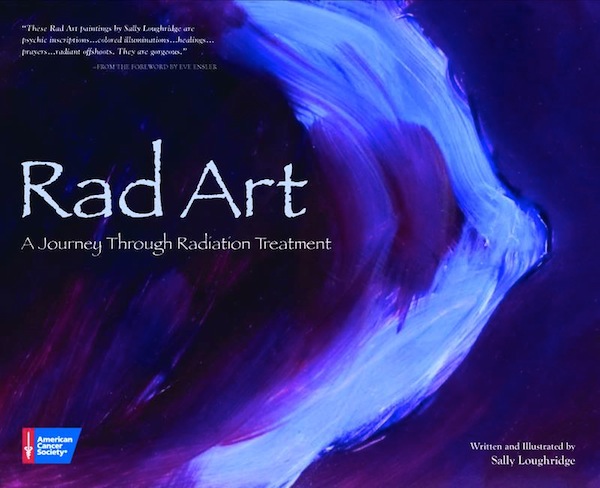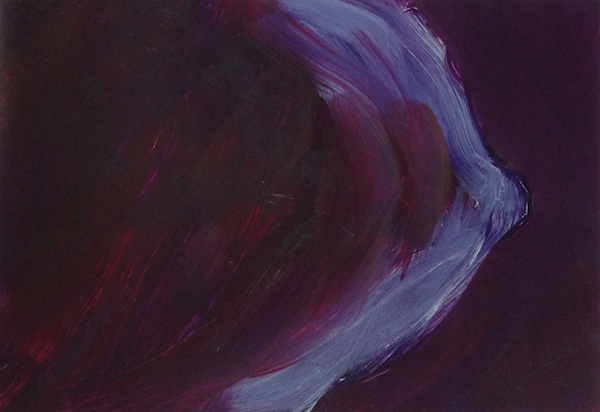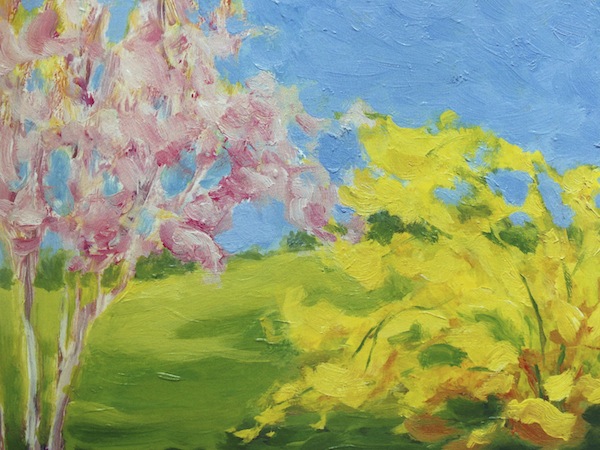Last week I wrote a blog post about reaching my five-year mark after being diagnosed with DCIS (Stage 0 breast cancer. You can read it here: DCIS — five-year checkup.
I just read this comment on the post from Sally Loughridge, who was also diagnosed with DCIS 10 years.
Diane, thank you for sharing again about DCIS. I am so glad you are fine. As you may recall I was diagnosed with DCIS – grade 3 almost ten years ago. Surgery and radiation followed, along with a lot of anxiety. One of my coping methods was painting a small picture, in 20 minutes or less, on each day of radiation. Those paintings eventually became the book, “Rad Art: A Journey through Radiation Treatment,” published by the American Cancer Society. I am still healthy now, but last week my daughter in her mid forties had a mastectomy and reconstruction due to DCIS – grade 0 throughout her breast. Every woman needs to be aware and monitor any breast changes. I am grateful for the advancements in treatment now, for our children and their children.
Sally Loughridge
In 2015, I wrote a blog post about Sally and her book and after reading her comment decided to republish the post. We all have our ways of coping and I believe one way is to share our experiences and what worked to relieve our stress. In the spirit of Thanksgiving, here is Sally’s story.
Have you ever used the word rad? (Slang for cool or awesome.)
Rad actually stands for radiation absorbed dose. It’s a term used to define a unit of energy that is absorbed from radiation — like when someone is having radiation therapy treatments to kill cancer cells.
Maine artist Sally Loughridge knows all too well what a rad is — she endured five and a half weeks of radiation therapy to kill off any lingering cancer cells in her breast.
To get through the experience, she did what she knows best. After every treatment, she went home and created a small painting. She allowed herself no more than twenty minutes and simply let the paint flow.
The result was a really rad book called Rad Art: a Journey Through Radiation Treatment.
The title doesn’t really have anything to do with either rad as in cool or rad as in radiation absorbed dose, says Sally. “Actually, the title “Rad Art” came from my abbreviated computer file name to stand for radiation art,” she told me. “I’ve always been told to keep file names short to save computer memory! This was far before I decided to make the art into a book.”
Whatever the origin of the title, it’s a clever one!
In the preface to Rad Art Sally wrote: “During the time between my cancer diagnosis and the start of radiation, I experienced a rush of powerful emotions. I could not always name them, but I felt them intensely in my body.”
By creating the daily paintings, Sally said she hoped she would find “solace, distraction, and release.”
“The paintings themselves were not intended to be art per se,” she explained, “rather the process of creating them was the critical element in my coping strategy.”
Day 1 My Right Breast
On the first day, she wrote that she feels protective of her right breast — in a familiar, motherly way. Of her painting, she said she was “startled to see how dark the interior is, full of the mystery and menace of cancer cells.”
Day 18 Itch!
By day 18, the radiation that has been absorbed by Sally’s skin has turned it red and sore and unbearably itchy. “I had no idea how bothersome the itching would become,” she wrote, “like mosquito bites many times over.”
Her painting makes you want to scratch.
She is more than half-way through her treatments.
Day 22 Swirling
I am especially drawn to this painting because of my own diagnosis of breast cancer. It was stage zero (DCIS) and the only treatment I had was a lumpectomy, but I relate strongly to the curves in the painting and what Sally wrote about them. “Perhaps they represent both my breast and this unexpected journey,” she said. “Cancer has challenged my body, my sense of self, and my outlook on life.”
Other people who saw her small paintings were also moved by them and encouraged her to share them with other cancer patients and their support networks. As a professional artist, she’s used to putting her work out there for the world to see, but this was different.
“At first, I wondered whether others could relate to the emotional path I had traveled, she said. “I wasn’t even certain I wanted to tell my story in a public way.”
But in addition to being a professional artist, Sally is also a retired clinical psychologist. She knows the benefits of hearing someone else’s story — that it can help to ease pain and fear.
“Each person’s cancer story is unique,” she acknowledged, “yet common emotions weave throughout the community of those impacted by cancer.”
Day 33 Good Morning
Sally’s radiation treatments ended in 2010 and she’s been doing fine ever since. Her paintings and journal entries evolved into her wonderful book, which was published by the American Cancer Society in 2012. It has won several awards including a 2013 USA Best Books Award for Women’s Issues.
The journal entry on her last day is as light-hearted as the accompanying painting. “Radiation treatment is over! I spread the paint around like I was richly buttering my bread. I feel a surge of joy and anticipation of life ahead.”
Rad Art: A Journey Through Radiation Treatment is available through the American Cancer Society Book Store and Amazon.
To learn more about Sally’s art and other books she has written, visit her website.






Leave A Comment